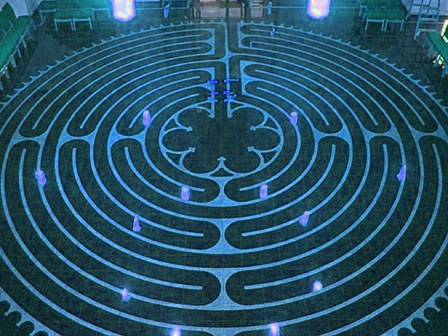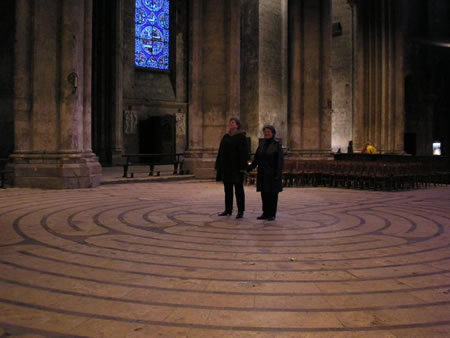| 
LABYRINTH
Lord
God of Mysteries,
Lead
me, Your wandering servant,
safely through the labyrinth of my life.
Keep
me alert at every turn to see my way clearly and to avoid
the pitfalls of evil
and temptation.
Stay
with me each day of my journey,
I beg of You. Let me remember that You
walk with me always, and are my Closest Companion and
my Ultimate Destination.
I
will not know how far I have progressed through the maze
of my life until I turn
that final corner, and see You standing before me in blinding
light
and radiant glory.
Please,
Oh, Lord, please let me not
be lacking when I exit from the winding passage of my
earthly existence,
to make an accounting for my life.
Please
forgive all my missteps now,
in advance, and keep me moving forward
in humility, wisdom and charity, negotiating successfully
the turning hallways of my own personal journey.
All
this I ask in humility and hope,
in gratitude and great burning love,
Amen

CHRISTIAN
LABYRINTHS
Early Christians often took a vow to make
a pilgrimage to the Holy City of jerusalem. Over the centuries
as Christianity grew
in Western Europe, this pledge became increasingly difficult
to fulfill.
Practices
emerged which enabled the devout
to honor their sacred pilgrimage commitment symbolically.
One
of these was the labyrinth. These were created on the
floors of many European cathedrals, and people walked
them prayerfully, as a substitute for the great pilgrimage
to Jerusalem.
The
most famous of these labyrinths is
on the floor of the Chartres Cathedral in France (circa
1200).
DESIGN
The
labyrinth design is an archetype found
in the symbiology of virtually all religions. It has a
single entrance, and a single route, which winds in a
circular pattern to the center and back again. That is,
from the labyrinth's center point the same path will take
the pilgrim out again. A labyrinth differs from a maze
in that there are no wrong turns or dead ends. you cannot
"get lost."

HISTORY
Labyrinths
date back thousands of years
and are not limited to any single culture
or religious tradition. The earliest examples are more
than 3,000 years old. They have been found in various
designs. Archeology suggests that these designs were often
connected with holy places of worship. The winding path
of most labyrinths creates a circular pattern, the circle
being a universal symbol of unity, wholeness and infinity.
Notes
from the Shrine Mont
Labyrinth at Orkney Springs, a Retreat Center of the Episcopal
Diocese of Virginia
Images
Next
Prayer
Prayer Index
Website Home
(c) Donn B. Murphy 2012
Contact
- Comment - Question? - dbm@nowstar.net
|